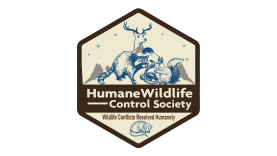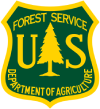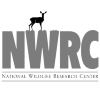Humane Wildlife Control in Albany, NY
The Humane Wildlife Control Society recommends non-invasive solutions to resolve human-wildlife conflicts. This includes:
Determining if the issue needs to be addressed at all
Opting for preventative measures first
Opting for wildlife exclusion as opposed to trapping
If trapping is the only way to solve the problem do so humanely
The Humane Wildlife Control Society screens candidates prior to recommendation. Our process requires any company we recommend to meet the following criteria:
Is properly licensed in New York for wildlife control
Carries appropriate business licenses and insurance
Complies with all New York laws and regulations for wildlife control
Adheres to the humane principles listed above.
In Albany, New York we recommend Humane Wildlife Removal Albany for professional wildlife control services. This is a private company that charges for their services.
Contact Information:
Meerkat Pest Control
518-874-0315
If you have any wildlife issues that can be handled by the state government agency for free, the New York Wildlife Commission can help.
State Contact Information: (518) 402-8883
The State Department of Agriculture may also be able to address your wildlife problem for no charge.
USDA Contact Information: (518) 457-2771
Comprehensive Guide to Wildlife Regulations and Humane Intervention in Albany, New York Regular trap checking at maximum 24-hour intervals Euthanasia Regulations Landscape modification to reduce attraction Raccoon and Opossum Conflicts Rabies vector status requiring special handling protocols Waterfowl Management Habitat modification to reduce nesting suitability Qualified Intervention Resources Suspected rabies cases, requiring immediate notification of Albany County Department of Health Protected Species Encounters Bald eagle sightings along the Hudson River corridor Public Education Resources
Regulatory Framework
State Oversight
Wildlife management in Albany operates primarily under New York State Department of Environmental Conservation (NYSDEC) regulations. These regulations establish fundamental parameters for wildlife intervention, including permit requirements for certain activities, protection status of various species, and prescribed methods for management. The NYSDEC’s Special Licenses Unit administers the Nuisance Wildlife Control Operator (NWCO) licensing program, which certifies individuals to conduct wildlife control activities for compensation.
Local Ordinances
Albany City Code Chapter 115 contains specific provisions regarding wildlife feeding, property maintenance standards affecting wildlife habitat, and requirements for addressing wildlife-related property damage. These ordinances complement state regulations while addressing concerns specific to Albany’s urban environment. The Albany Department of General Services enforces these ordinances in coordination with the Department of Buildings and Regulatory Compliance.
Federal Protections
Migratory birds commonly found in Albany, including Canada geese, woodpeckers, and various waterfowl species, receive protection under the federal Migratory Bird Treaty Act. Additionally, bald eagles, which occasionally appear along the Hudson River corridor within city limits, are protected under the Bald and Golden Eagle Protection Act, severely restricting management options.
Protected Species in Albany
Birds of Special Concern
Albany’s position along significant migratory pathways and proximity to the Hudson River creates habitat for protected avian species. Peregrine falcons, which nest on tall structures including the Corning Tower, receive special protection status. Management activities affecting these species require specific NYSDEC approval, usually implemented only in cases of demonstrable public safety concerns.
Bat Populations
Albany’s historic buildings provide habitat for several bat species, including the little brown bat and big brown bat. White-nose syndrome has significantly impacted regional bat populations, resulting in enhanced protection status. From May through August, building owners must consult with NYSDEC before undertaking any exclusion activities to prevent disturbance during maternity colony periods.
Riparian Wildlife
Species associated with Albany’s waterways, including beaver, muskrat, and river otter, are subject to specialized management protocols. Intervention affecting these species, particularly when involving alteration of water flow or dam removal, requires NYSDEC permits and often necessitates consultation with Albany Water Department regarding potential impacts on city infrastructure.
Humane Intervention Standards
Exclusion Requirements
New York State regulations and Albany local standards emphasize exclusion as the preferred wildlife management approach. Exclusion methods must provide effective barriers while preventing unnecessary suffering. During reproductive seasons, exclusion implementation must account for dependent young, generally requiring inspection for their presence before sealing entry points. Albany’s historic district presents additional challenges, as exclusion methods must comply with historic preservation standards.
Capture and Release Protocols
When capture becomes necessary, Albany follows NYSDEC guidelines requiring:
Appropriate shelter from elements for trapped animals
Water provision in traps during periods of high temperature
Restrictions on transportation of certain species beyond capture site due to disease concerns, particularly applicable to raccoons, skunks, and bats due to rabies vector status
When euthanasia becomes necessary due to disease concerns or severe injury, methods must comply with American Veterinary Medical Association guidelines and be performed only by licensed professionals. Chemical euthanasia must be administered only by licensed wildlife rehabilitators or veterinarians. Albany Animal Control maintains capabilities for euthanasia when required for public safety concerns.
Seasonal Considerations
Spring Reproductive Period
From approximately March through June, particular care must be taken during wildlife intervention to prevent orphaning of dependent young. During this period, exclusion efforts should include thorough inspection and monitoring techniques to verify absence of young animals before sealing entry points. Interference with active dens or nests may violate state regulations during this period.
Winter Denning
Albany’s significant winter temperatures create challenges for humane intervention during cold months. Eviction of denning animals during severe weather periods may constitute inhumane treatment under state guidelines if adequate alternative shelter is unavailable. Management planning should account for these constraints, particularly when addressing wildlife in sealed building spaces that provide thermal protection.
Migratory Periods
Albany experiences significant wildlife movement during spring and fall migratory periods. Intervention during these periods should account for temporary presence of normally uncommon species and potential for increased human-wildlife interactions. This includes heightened activity of Canada geese in Washington Park and other green spaces, and increased movement of deer populations through suburban-urban transition zones in the Pine Bush area.
Species-Specific Approaches
Urban Deer Management
Albany’s proximity to the Pine Bush Preserve and other green corridors results in regular deer presence in residential areas. Management approaches emphasize:
Appropriate fencing meeting city code requirements
Vehicle collision reduction through signage in high-activity corridors
Prohibition on feeding, subject to enforcement and fines
Seasonal awareness of increased activity during rut periods
These species commonly access structures throughout Albany, particularly in older neighborhoods with established tree canopy. Intervention must account for:
Seasonal denning patterns, particularly female raccoons seeking secure nesting sites in spring
Inspection requirements before excluding animals from structures
Waste management practices to reduce attraction
Albany’s numerous water features, including Washington Park Lake and Buckingham Pond, attract resident and migratory waterfowl. Management emphasizes:
Public education regarding feeding prohibitions
Egg addling permits during nesting season
Coordination with parks department for implementation of deterrent features
Licensed Wildlife Operators
Intervention involving capture, exclusion, or euthanasia should be performed by NYSDEC-licensed Nuisance Wildlife Control Operators. These professionals must maintain current licensing, liability insurance, and demonstrated knowledge of humane practices. Albany’s Department of General Services maintains a reference list of licensed operators serving the Albany area.
Wildlife Rehabilitation
Injured or orphaned wildlife requiring rehabilitation must be transferred to licensed wildlife rehabilitators. Albany area rehabilitators specialize in different species groups and maintain appropriate permits for their scope of practice. The NYSDEC regional office can provide current contact information for licensed rehabilitators accepting specific species.
Municipal Resources
Albany Animal Control responds to immediate public safety concerns involving wildlife but generally refers non-emergency situations to appropriate licensed professionals. The Albany Department of General Services addresses wildlife issues affecting public property, implementing management programs consistent with state regulations and humane standards.
Reporting Requirements
Notifiable Diseases
Certain wildlife diseases require mandatory reporting to public health authorities. These include:
Unusual wildlife mortality events, reportable to NYSDEC Regional Wildlife Office
Potential zoonotic disease observations requiring coordination between animal control and public health authorities
Observations of endangered or threatened species within Albany city limits should be reported to the NYSDEC to support monitoring efforts. This includes:
Peregrine falcon nesting activity
Protected bat species, particularly during winter hibernation periods
The NYSDEC Region 4 Office provides educational materials regarding wildlife coexistence strategies. Albany’s Department of General Services offers property assessment consultations to identify wildlife attraction factors and recommend appropriate modification strategies. Additionally, the Albany Pine Bush Preserve Commission conducts regular educational programming regarding wildlife ecology and appropriate interaction practices.







